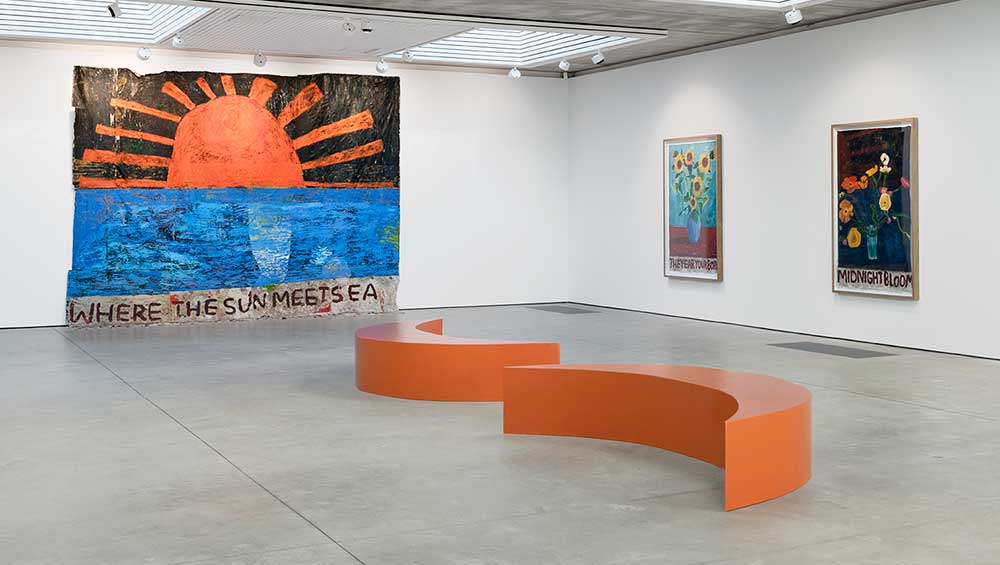
Sophie Barber, Mackerel sky, mackerel sky, never long wet, never long dry, installation view, Hastings Contemporary, 27 September 2025 – 15 March 2026. Courtesy Alison Jacques. Photo: Michael Brzezinski.
Hastings Contemporary, East Sussex
27 September 2025 – 15 March 2026
by SABINE CASPARIE
There is something endearing about a mackerel sky: soft, fluffy clouds like little, round sheep, the pretty white-on-blue celestial design. Sophie Barber seems to think so, too: her exhibition at Hastings Contemporary, the first in her hometown of Hastings, is titled Mackerel sky, mackerel sky, never long wet, never long dry. Titles have always been an important part of Barber’s work, appearing at the bottom of her paintings like captions, thick and smeary and coloured blood-red. Sometimes, the words are misspelt, as in The Year Your Born (2025), which is partly because – as the interim gallery director, Kathleen Soriano, tells us – the artist is dyslexic, but I get the impression that it is more the inherent sense of imperfection and directness to which Barber is drawn.
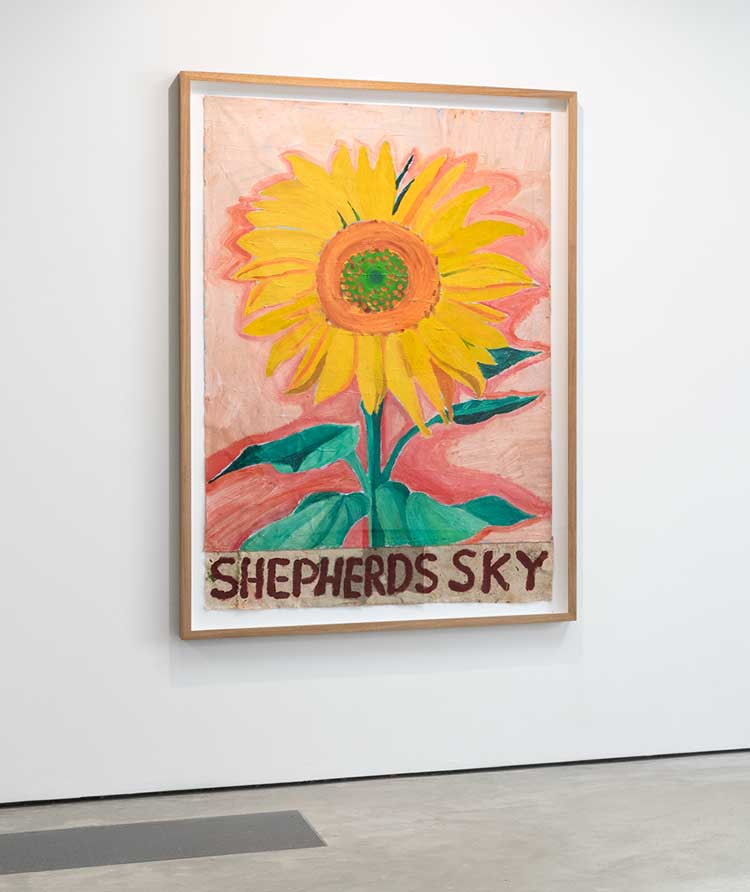
Sophie Barber, Mackerel sky, mackerel sky, never long wet, never long dry, installation view, Hastings Contemporary, 27 September 2025 – 15 March 2026. Courtesy Alison Jacques. Photo: Michael Brzezinski.
In Where the sun meets the sea and the sea meets me (2025), a giant orange sun sits squarely on a cobalt-blue sea against the backdrop of a pitch-black sky (the full subscript has that misspelling again, reading “Where the sun meetsea and the see meets me”). There is some sort of irregularity in the painting itself, too: a midnight sky does not rhyme with a sun with giant sunrays. I didn’t notice it at first, caught up as I was in the wholeness of the work, which extends over the gallery floor like the waves of the sea in the painting, lapping up the sand. The sun did strike me as a little aggressive, until Barber told us that the painting started as a vegetable painting and the sun was first a radish, but the radish didn’t please her, so she painted over it. And then I can’t unsee it: the round forms of the radish’s head hiding inside the giant circle of the sun. Calling it a landscape doesn’t do this painting justice; it is a happening, an occasion: alive and immersive.
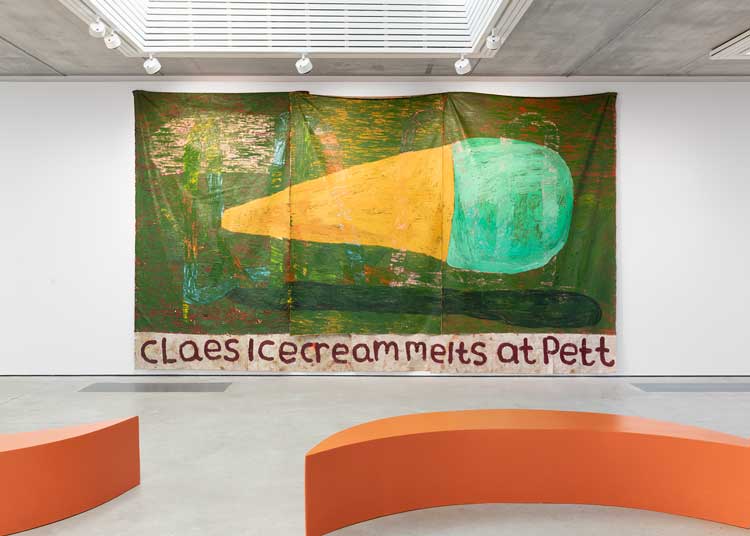
Sophie Barber, Mackerel sky, mackerel sky, never long wet, never long dry, installation view, Hastings Contemporary, 27 September 2025 – 15 March 2026. Courtesy Alison Jacques. Photo: Michael Brzezinski.
Barber’s canvases are unstretched, and her paintings often consist of more than one canvas, glued together like a collaged background. Another monumental painting, Claes’ Ice Cream (2025), shows a giant ice cream cone the size of a small car, the apple green of the ice-cream standing out from its background, which is a darker and less shiny shade of green. Barber was inspired by Claes Oldenburg’s sculpture of an ice-cream cone and by the blob-like sculptures of Franz West, and the dark puddle under the ice-cream looks like one of West’s sausage-shaped outdoor benches. Barber looks at other artists – she used the word “sampling” – and I detect many more apart from Oldenburg and West, although these are not confirmed by Barber. There is some of Rose Wylie’s clumsy and deceptively childish subject matter, Alvaro Barrington’s interest in the materiality of the canvas and impasto paint, and John Hoyland’s fierce colour palette and matte finish. The appearance of shoeprints and recycled rubbish from the studio floor remind me of Oscar Murillo, the thick blobs of paint on Barber’s “banners” bring to mind the painted rags of Lucian Freud, left in the studio and sometimes making an appearance in his paintings. And yet, despite these direct and assumed references, Barber’s giant paintings are entirely fresh; it is as if she takes all these art-historical precedents and mixes them in a black hat, coming out with something very much her own.
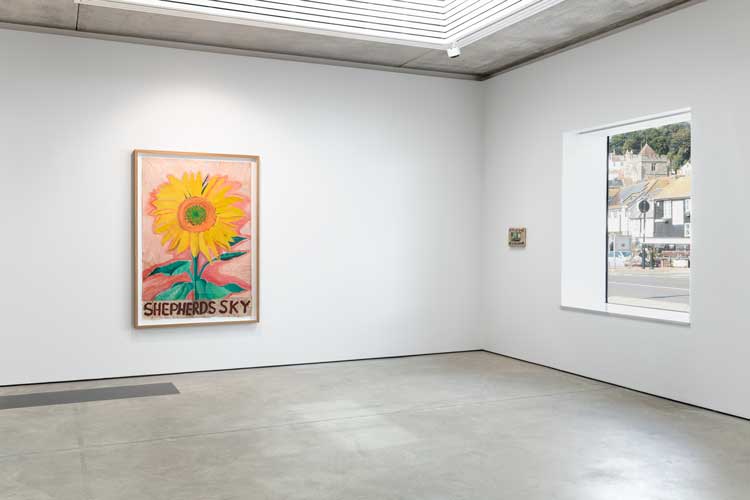
Sophie Barber, Mackerel sky, mackerel sky, never long wet, never long dry, installation view, Hastings Contemporary, 27 September 2025 – 15 March 2026. Courtesy Alison Jacques. Photo: Michael Brzezinski.
Barber’s “canvas parcels” – made by folding up canvas until it forms a square of fabric, then glazing it and hanging it on the wall like a cross between a sculpture and a painting – are also uniquely hers. Alfred Wallis Boat (2025) is inspired by the British painter’s quaint seascapes, but Barber’s treatment gives edge to a rather dull picture of a boat in the sea; the work also hangs beautifully next to a window looking out on to Hastings’s fishermen’s boats. I can almost picture Barber sitting in a small, rickety boat with Wallis, conversing about the weather and the sea, watching a seagull steal a chip (somehow, I also picture Barber as a fish and chips fan). Howard’s red sun (2025), with the subscript “by Howard hodgkin and sophie barber” references, of course, Hodgkin, but is also a mini version of Barber’s large red sun on the opposite wall. What is so great about Barber’s works is that they are down-to-earth and humorous, without ever forgetting the trail of art history that preceded them.
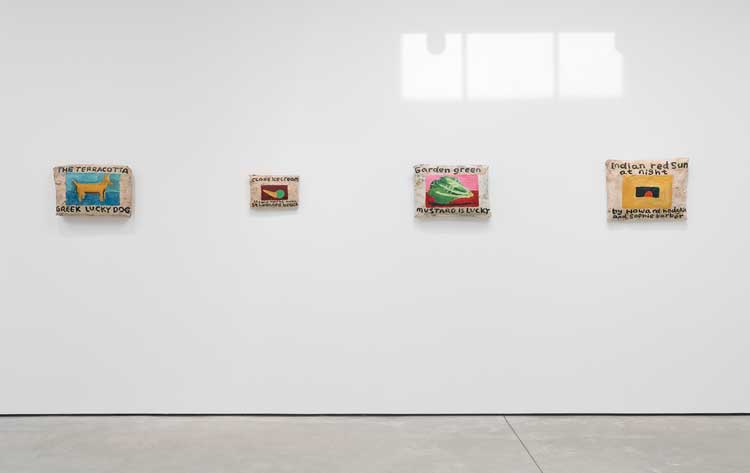
Sophie Barber, Mackerel sky, mackerel sky, never long wet, never long dry, installation view, Hastings Contemporary, 27 September 2025 – 15 March 2026. Courtesy Alison Jacques. Photo: Michael Brzezinski.
There are four framed paintings in a smaller size than the large canvases: bold, colourful still lives of flowers named after famous still life paintings. David Hockney’s and Vincent van Gogh’s sunflowers make an appearance, and a darker bouquet, Midnight Bloom (2025), was inspired by Wolfgang Tillmans’ photographs; Barber told us she liked the idea of making a version of a still life in another medium. She also explained that these smaller works were produced for practical reasons: the messiness of her usual process, the odours and chemical composition of the oil paint and the enormous scale requiring her to stand on ladders had to be adapted to her pregnancy this year. “I have a baby attached to my breast right now!” she added, sitting on one of the two bright-orange benches made especially for the exhibition, feeding her seven-week-old son.
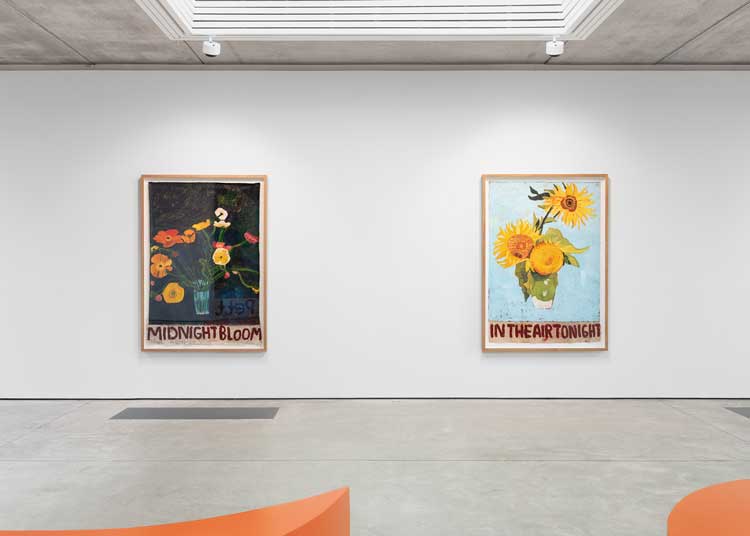
Sophie Barber, Mackerel sky, mackerel sky, never long wet, never long dry, installation view, Hastings Contemporary, 27 September 2025 – 15 March 2026. Courtesy Alison Jacques. Photo: Michael Brzezinski.
Something of the dynamic heft of the larger paintings and the tension of the folded-up “canvas packages” gets lost in the smaller, framed works. The reason is fully understandable, of course; it is a feat that Barber has managed to produce these new works, all but one made in 2025, during a pregnancy, which demands a lot from the body. The still life dedicated to Van Gogh, In the air (2025) is the most personal of the four, its caption referencing Phil Collins’s In the Air Tonight. He is her parents’ favourite musician, Barber explained, but in the image itself I also see her own sweet family unit of three; two sunflowers entwined in the lower half of the painting and one on top, airborne as if flying away on its own little adventure.
Ultimately, the large paintings pack the most punch: heavy and draping and loaded with material, brimming with an almost visceral energy, their subjects surprisingly light and playful. The reds, pinks, yellows and oranges pushing through the dark-green grass behind the ice-cream cone in Claes’ Ice Cream, the paint caked on in broad, horizontal brushstrokes, sometimes changing direction or cross-hatching or crashing into one another like the waves of that deep blue sea. Barber’s paintings relieve us from any expectations of “high art”, but in the process, they become it.
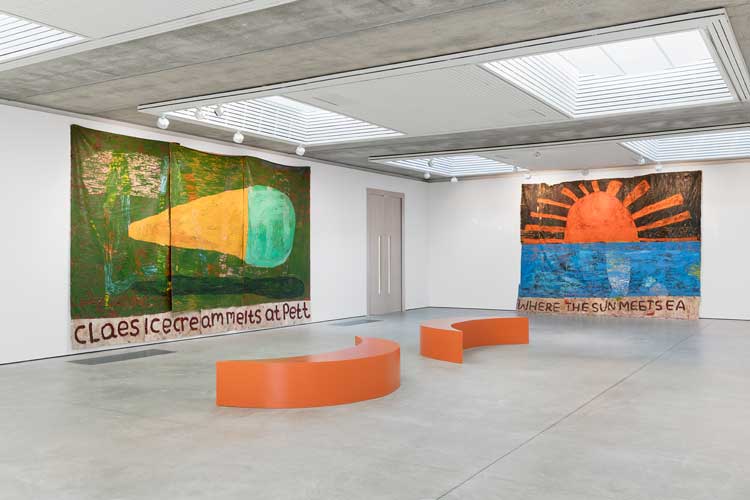
Sophie Barber, Mackerel sky, mackerel sky, never long wet, never long dry, installation view, Hastings Contemporary, 27 September 2025 – 15 March 2026. Courtesy Alison Jacques. Photo: Michael Brzezinski.